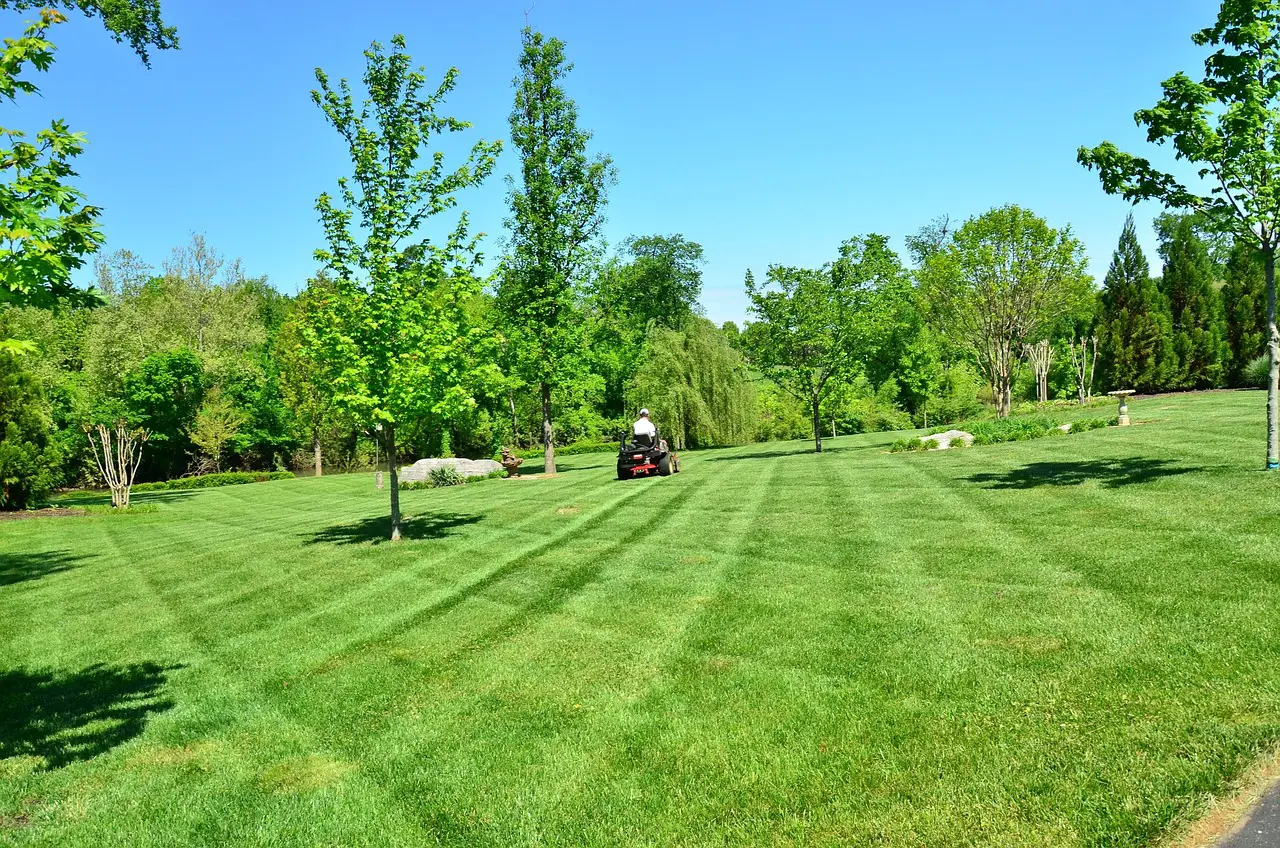Having a lush and green lawn is a dream for many homeowners, but not everyone has the time or desire to spend hours each week on lawn care. Fortunately, it is possible to have a beautiful lawn that requires minimal maintenance with the right approach. In this article, we’ll share some tips and tricks for lawn care for a low-maintenance lawn.

- Choose the right grass type The type of grass you choose for your lawn can make a big difference in the amount of maintenance required. Some grasses, such as Kentucky bluegrass, require frequent watering, fertilizing, and mowing to look their best. However, other grasses, such as fine fescue or zoysia grass, require less water and fertilizer and grow more slowly, meaning less mowing is required. If you’re looking for a low-maintenance lawn, consider choosing a grass type that is well-suited to your climate and requires less maintenance.
- Mow less often Mowing your lawn too frequently can actually lead to more maintenance. When you cut the grass too short, it can stress the roots and cause the lawn to require more watering and fertilizing. To keep your lawn healthy and low maintenance, aim to mow no more than once a week and set your mower to leave the grass at a height of around 3 inches. This will help shade the soil and retain moisture, reducing the need for frequent watering.
- Water deeply and infrequently Watering your lawn deeply and infrequently is better than watering it frequently for short periods of time. This allows the water to penetrate deep into the soil and reach the roots, encouraging the grass to develop deeper roots that are more drought-resistant. To water, your lawn effectively, aims for 1 inch of water per week, either from rainfall or irrigation. Use a rain gauge or a straight-sided container to measure how much water your lawn is receiving and adjust your irrigation as needed.
- Use slow-release fertilizers Using slow-release fertilizers is another way to reduce the amount of maintenance required for your lawn. These fertilizers release nutrients over time, providing a steady source of nutrition for your grass and reducing the need for frequent applications. Look for fertilizers that contain a mix of nitrogen, phosphorus, and potassium, as well as micronutrients like iron and magnesium.
Another important consideration when it comes to low-maintenance lawn care is watering. One way to reduce the amount of watering your lawn needs is to choose drought-tolerant grass species. These grasses are able to survive with less water and will require less attention from you. Some examples of drought-tolerant grasses include Bermuda grass, Zoysia grass, and Buffalo grass.

Another way to minimize watering needs is to use efficient watering techniques. Rather than watering your lawn every day, consider watering deeply but less frequently. This will encourage your lawn’s roots to grow deeper and become more drought-resistant. Additionally, make sure to water your lawn in the early morning or evening to avoid losing water to evaporation.
Finally, keep in mind that a low-maintenance lawn doesn’t have to be a boring lawn. You can still incorporate colorful flowers and other decorative plants into your landscape design. Just be sure to choose plants that are well-suited to your climate and soil type, and that require minimal attention to thrive.
Frequently Asked Questions:
Q: How often should I water my low-maintenance lawn? A: Aim to water your lawn deeply once a week, providing around 1 inch of water per week either from rainfall or irrigation.
Q: Can I still have a green lawn if I don’t fertilize it frequently? A: Yes, using slow-release fertilizers can provide a steady source of nutrition for your lawn without the need for frequent applications.
Q: What should I do if my lawn gets a disease or pest infestation? A: If your lawn is affected by disease or pests, it’s important to take action quickly to prevent the problem from spreading. Contact a lawn care professional to help diagnose and treat the issue.
In conclusion, a low-maintenance lawn doesn’t have to be a boring lawn. With the right grass type, mowing schedule, watering routine, and fertilizer, you can have a beautiful lawn that requires minimal maintenance. By following the tips and tricks outlined in this article, you can enjoy a lush and green lawn without spending hours each week on lawn care.

